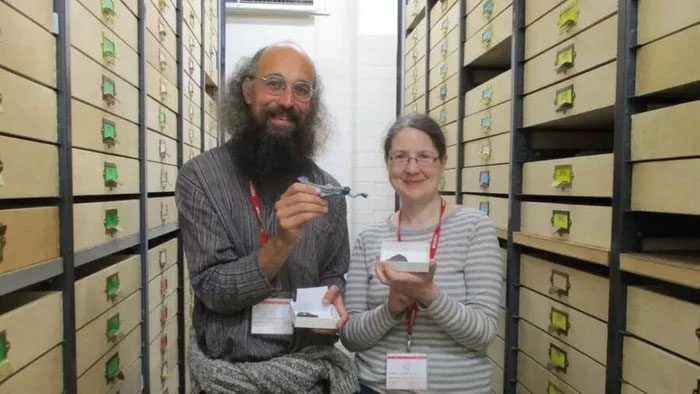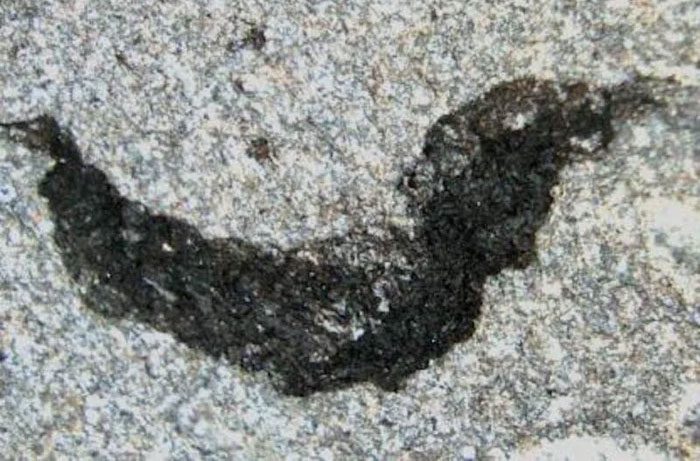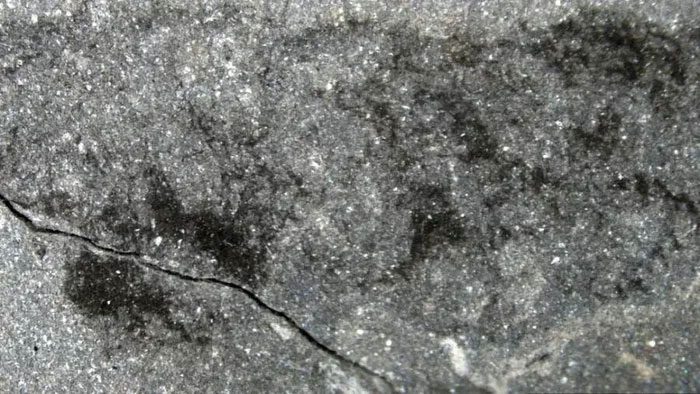These tiny marine fossils date back 460 million years, when an ocean covered all of Wales.
While excavating a quarry in Llandrindod Wells, Powys, Wales, researchers stumbled upon two incredibly tiny fossils, estimated to be about 460 million years old. Although scientists believe they resemble a type of extinct marine organism known as opabiniids, they suggest that these fossils represent an entirely new species.
As phys.org explains, researchers Joseph Botting and Lucy Muir, colleagues at the National Museum Wales, made this intriguing discovery during the COVID-19 lockdown.
Botting explained: “When the lockdown started, I thought I would make one more trip to collect some additional fossils before writing them up.”
In a study published in the journal Nature Communications, the researchers described finding the two fossils while excavating the field. One measures about half an inch long, while the other is only 0.1 inch. Although the smaller specimen has not yet been named pending further study, the researchers have named the larger fossil Mieridduryn bonniae.

Dr. Joseph Botting and Dr. Lucy Muir are Honorary Research Fellows at Amgueddfa Cymru, National Museum Wales.
Mieridduryn is Welsh for “spiny snout” (mier, meaning thorn bush, and duryn, meaning snout), referring to the creature’s pointed nose. The latter half of its name pays homage to Bonnie, the granddaughter of the landowner where Botting and Muir found the fossil.
“Many other scientific names for this organism are also derived from Latin or Greek words,” Muir explained to phys.org, “but we really wanted to honor Wales, where the specimens were discovered, so we chose to use the Welsh language.” She added that Bonnie supported and invested in their research.

The smaller specimen among the two, measuring only 1/10 inch.
So what exactly are the fossils that Botting and Muir discovered? According to Live Science, they share some similarities with an ancient organism called opabiniids, which are extinct marine creatures that appeared during the Cambrian explosion.
However, the species discovered in Wales lived during the Ordovician period (approximately 485.4 million to 443.8 million years ago), making it 40 million years younger than opabiniids and exhibiting several significant differences. For example, M. bonniae lacks eyes, while opabiniids typically have five eyes. Furthermore, M. bonniae has a pointed snout, whereas opabiniids have a smooth snout.
“It could be a completely new type of opabiniid,” Joanna Wolfe, a research associate in the Department of Organismic and Evolutionary Biology at Harvard University and a co-author of the study, told Live Science. “But it may not be an opabiniid or a radiodont—this organism has characteristics suggesting it lies somewhere in between those two ancient creatures.”

Curious specimens found at a quarry in Wales known for discovering ancient sponges—researchers are eager to continue searching for more fossils there.
In fact, researchers speculate that these fossils may belong to a creature resembling arthropods—a group that includes modern crabs, spiders, and millipedes.
Stephen Pates of the University of Cambridge, the lead author of the study, told phys.org: “Our initial studies suggest that whether considered one or two species, they are more closely related to modern arthropods than to opabiniids.” These analyses suggest that Mieridduryn and the smaller specimen are not opabiniids.
The researchers also hypothesize that the smaller of the two fossils may be the larval form of the larger specimen, M. bonniae.
“The size of the smaller specimen may be comparable to some modern arthropod larvae—we have to consider this possibility in our analyses,” Wolfe explained to phys.org.
Regardless of what the fossils discovered in Wales are, they represent an important link in the evolutionary history of life on Earth.
|
Opabiniids are extinct animals found in the Middle Cambrian Burgess Shale Lagerstätte (505 million years ago) in British Columbia. They are soft-bodied creatures, reaching lengths of up to 7 cm, with segmented bodies featuring lateral flaps and a fan-shaped tail. Their heads exhibit unusual characteristics: five eyes, a mouth located beneath the head and facing backward, and a clawed proboscis that could bring food to their mouths. Opabiniids likely lived on the seafloor, using their proboscis to search for small, soft food. In fact, only about twenty well-preserved specimens have been described; three opabiniid specimens are known from the Greater Phyllopod layer, where they comprise less than 0.1% of the community. |
The first thorough examination of opabiniids in 1975 revealed their unusual characteristics, suggesting they were unrelated to any known animal phyla, or perhaps a relative of the ancestors of arthropods and annelids. However, subsequent studies since the late 1990s have consistently supported their relationship as a member of the basal arthropod lineage.




















































